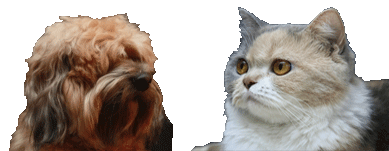Information about the Beauceron
The Beauceron is a guard dog and herding dog breed falling into the working dog category whose origins lie in the plains of Northern France. The Beauceron is also known as Berger de Beauce (sheepdog from Beauce) or Bas Rouge (red-stockings).
This breed stands 61 to 70 cm (24 to 27.5 inches) in height and weighs 30 to 45 kg (66 to 100 pounds). Its standard colouring is black and tan (referred to in French as “rouge ecureil”, squirrel-red) or tan and grey (harlequin). Other colours, such as the once prevalent tawny, grey or grey/black, are now banned by the breed standard. The outer coat is harsh while the undercoat is soft and silky. It comes in black with distinct tan markings and in a less common harlequin coat with patches of gray, black and tan. The harlequin coats should have more black than gray with no white. In the black and tan dogs the tan markings appear in two dots above the eyes, on the sides of the muzzle, fading off to the cheeks, but do not reach the underside of the ears. Also on the throat,, under the tail and on the legs and the chest. Tan markings on the chest should appear as two spots but a chest plate is acceptable.
Although most breeds may or may not have dewclaws (many owners of other breeds remove dewclaws, especially if the dog is used for field and hunting), an important feature of the Beauceron is the double dewclaw. A beauceron must have double dewclaws, which form well separated ‘thumbs’ with nails on each rear leg, anything less will result in disqualification.
The Beauceron is known in France as a guard dog, a helper around the farm (herding sheep or cattle), and/or a ring sport dog (primarily protection training). This athletic, healthy and long-lived breed has been bred to be intelligent, calm, gentle, and fearless.[4] Adults are typically suspicious of strangers and are excellent natural guard dogs. On the other hand they typically take their cue from their handlers when it comes to greeting strangers, and are neither sharp nor shy. They do best when raised within the family but they can sleep outside, the better to act as guards (their weatherproof coats make them ideal dog kennel users even in the coldest winters). They are eager learners and can be trained to a high level. However, their physical and mental development is slow, relative to other similar breeds (e.g. German and other large shepherds): they are not mentally or physically mature until the age of about three years, so their training should not be rushed. Several five- or ten-minute play-training exercises per day in the early years can achieve better results than long or rigorous training sessions.
Beauceron can compete in dog agility trials, obedience, showmanship, flyball, tracking, and herding events. Herding instincts and trainability can be measured at noncompetitive herding tests. Beauceron exhibiting basic herding instincts can be trained to compete in herding trials.
A French herding breed known for centuries in western Europe, the Beauceron is noted as one of the breeds used to create the Doberman Pinscher.
The regional name is somewhat misleading. The breed was found throughout northern France, rather than just in the Beauce region. Although quite different in appearance, the Beauceron and the long-haired sheep dog, the Briard, stem from similar ancestral stock, sharing the trait of double dewclaws on the hind legs. Both were used to herd sheep and cattle. Like the Beauceron, the Briard is found throughout northern France, and despite implications from its name, also did not come exclusively from the Brie region. Its nickname is Briad de Beau.
In 1809, Abbé Rozier wrote an article on these French herding dogs, in which he described the differences in type and used the terms Berger de Brie and Berger de Beauce.
In 1893, the veterinarian Paul Megnin differentiated between the long-haired Berger de la Brie and the short-haired Berger de Beauce. He defined the standard of the breed, with the assistance of M. Emmanuel Ball. In 1922, the Club des Amis du Beauceron was formed under the guidance of Dr. Megnin.
In 2008, the Beauceron made its debut in the Westminster Kennel Club Dog Show.
A very versatile breed, the Bas Rouge is used to both guard and herd sheep and cattle. It was once very useful against wolves, now long gone from northern France. The breed served in both world wars as messenger dog, supply transport dog, detection of land mines and rescue of the wounded.
[Back]

